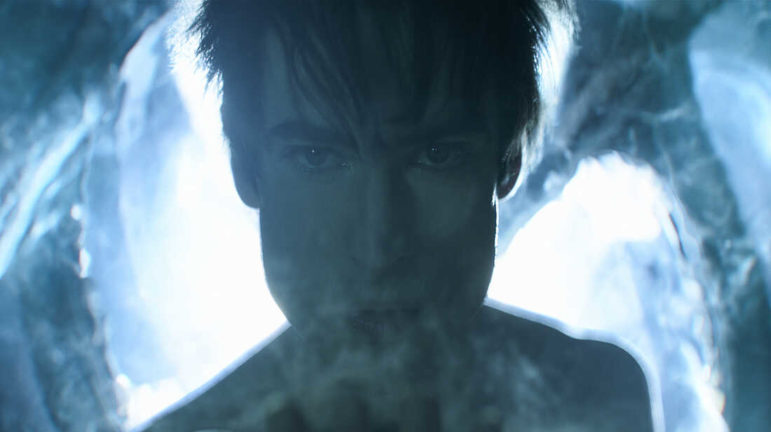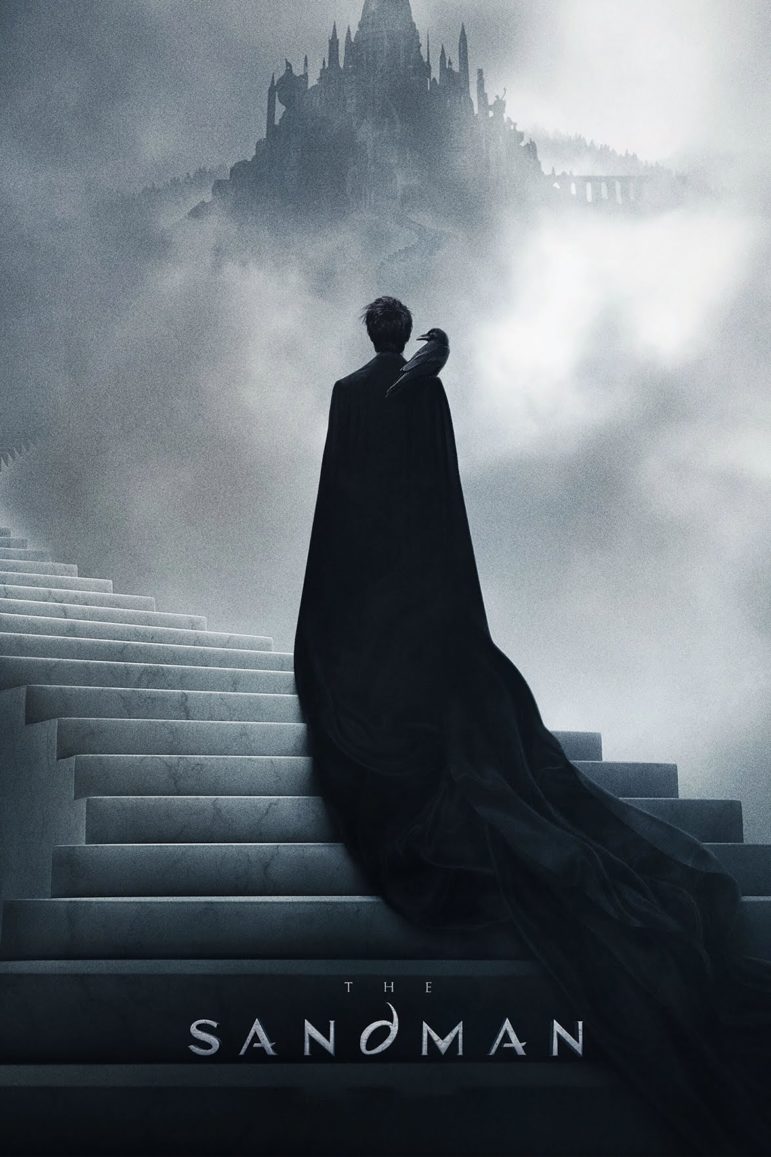
Today’s review comes to us from Noelle K. Bowles. She teaches literature and writing courses at Kent State University at Trumbull, specializing in nineteenth-century British literature, the fantastic, creative writing, women’s literature, and the basic writing courses everyone loves to hate. When not preparing class materials or grading papers, she spends her time kissing her Frenchie, complaining about cat hair, cooking Indian cuisine, and shaping clay into ceramic monsters… oh, and reviewing television and film.
Based on Neil Gaiman’s graphic novel series, which first appeared in print in 1989, Netflix’s new series The Sandman will enchant newcomers and fans of the comics alike – providing that viewers like speculative horror/fantasy and are open to diverse casting. The eponymous character of Netflix’s Lucifer, for example, played by Tom Ellis, is quite different in appearance from The Sandman’s Gwendoline Christie, who embodies Lucifer Morningstar in this adaptation. But for the attentive viewer, the creators make clear that the anthropomorphized characters of metaphysical and mythological entities appear as we wish to see them – as when the Sandman’s (Tom Sturridge) former love, the ancient African queen Nada (Deborah Oyelade), sees him as a young Black man (Earnest Kingsley Jr.).
The tale begins with the familiar caution of just because we can does not mean we should when a contemporary of Aleister Crowley seeks to bring his son back from death by summoning and imprisoning Death itself. But this self-styled “Magus,” Roderick Burgess (Charles Dance), captures Death’s sibling Dream of the Endless – also known as Morpheus or Oneiros, among other names (Tom Sturridge) instead.
Real-world chaos builds as Dream endures his captivity for nearly a century and, upon escape, must locate his missing tools (helm, sand, and ruby) and rebuild his metaphysical realm and rein in dreams and nightmares who have taken advantage of his absence.

Morpheus (Tom Sturridge) blows a kiss in The Sandman. [Courtesy: Netflix]
The Sandman also meditates on the degrees to which we can transcend our origins. For The Endless – Dream, Death, Desire, Despair, Destiny, Destruction, and Delirium – the goal is, as the series begins, to control and, perhaps, expand their realms.
We meet only Dream, Death, Desire, and Despair in this first season, and Desire appears bent on forcing their brother Dream to acknowledge the overlap between their realms. Desire’s sleek red amorphous realm and non-binary embodiment (Mason Alexander Park) oppose Dream’s Gothically constructed lands, and their enmity toward their brother results in creepy but intriguing conflict.
If the Endless have an existence beyond steely control of their realms and prerogatives, it is Death (Kirby Howell-Baptiste) who leads the way in her gentle compassion for those whose lives she ends. For those who have read Preludes and Nocturnes (volume 1 of the series), the moment we meet her is wonderfully and faithfully rendered from the comic.
Escape from one’s origins – or the degree to which it is possible – also influences the human villains of the series, as well as its heroes. Alex Burgess is the son of Roderick, a boy who should have released Dream after his father’s death but cannot escape his father’s influence; a third son, unacknowledged by his father, is John Dee, who has come to rely on Dream’s ruby. Dee’s life is perhaps the saddest and also the sickest as he struggles for his own path against the inheritance of his grifter mother and the ill-fated magus who captured Dream.
Meanwhile, Rose Walker (Kyo Ra) is the “vortex” over whom Dream and an escaped nightmare, The Corinthian (Boyd Holbrook), compete. While her past is also one of trauma, she refuses to be drawn into the greed that destroys. Her desire is to rescue others rather than serve herself.
Nightmares and visions similarly strive for agency. The villainous Corinthian seeks to break free of Dream’s control while his fellow nightmare Gault (Ann Ogbomo) wants more than to terrorize people, and Fiddler’s Green (Stephen Fry) wants to be part of the journey rather than the destination.

The Sandman [Courtesy: Netflix]
The series’ theology is based in Christianity – there is a Hell where Lucifer holds sway, and while we neither see nor hear from an omnipotent sky-god, Lucifer mentions “the silver city” with an upward glance, and viewers understand that there is a power above even the Adversary. Gaiman is no adherent to dogma, however, and reinvents Biblical characters like Cain (Sanjeev Bashkar) and Abel (Asim Chaudhry), who can no more help killing and being killed than the sun can stop from rising. We are treated to the Fates from Greek mythology and also to the Muse Calliope in the season’s final surprise episode.
Just as the series leaves viewers wanting more, Netflix dropped an additional episode 11: “A Dream of a Thousand Cats / Calliope.” The first half reflects on the Anthropocene as domestic cats are subject to the imperialist whims of their owners, and “Calliope” muses on the creative process and to what lengths an artist might go to secure fame.
The Sandman gives viewers fantasy, violence, dreams, gore, hope, and kindness in a heady mélange that never allows us to relax into the daydream that we are uncomplicated creatures who only seek peace and fulfillment.
The Wild Hunt is not responsible for links to external content.
To join a conversation on this post:
Visit our The Wild Hunt subreddit! Point your favorite browser to https://www.reddit.com/r/The_Wild_Hunt_News/, then click “JOIN”. Make sure to click the bell, too, to be notified of new articles posted to our subreddit.